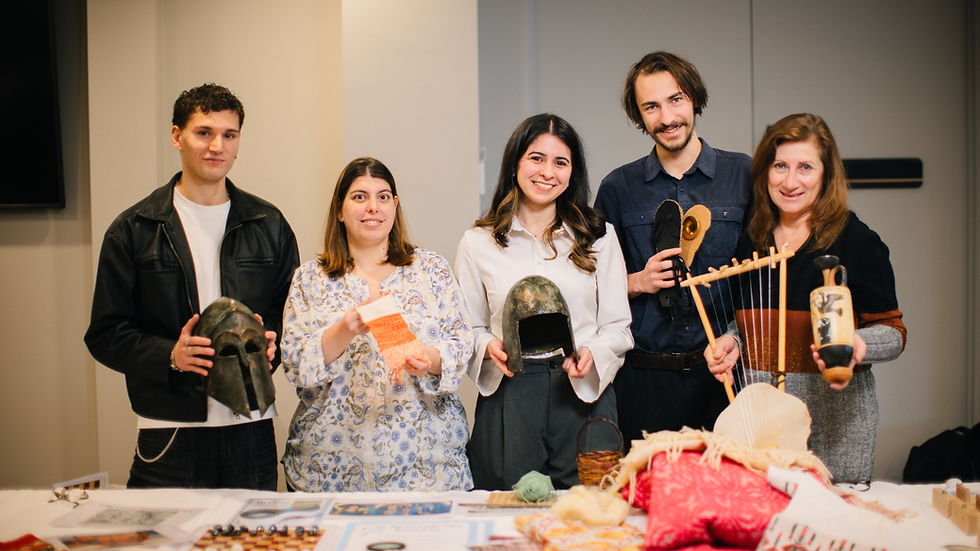The Riddle of the Sphinx
- Hellenic Museum
- Jan 14, 2021
- 2 min read
Updated: Aug 25, 2021

The Egyptian Sphinx of Giza is one of the most recognisable sculptures and mythological creatures of the ancient world.
In Egypt, the sphinx was depicted with the head of a man and the body of a lion. Positioned in what we now understand is the pyramid (and thus mortuary) complex of Pharaoh Khafre, the symbolism of the sphinx in ancient Egypt is not clear. Inscriptions on it, however, refer to the double lion god, Ruti, who stood at the entrance of the Underworld, while remains of the sphinx’s beard and cobra emblem which would have sat on its headdress, indicate an association with protection and monarchy.
Outside of Egypt, the sphinx is also known in Bronze Age Cyprus, Hittite Anatolia, Phoenicia, Syria and Sicily.
But have you met the ancient Greek sphinx?
Brought to Greece through trade with Egypt, the Greek sphinx, unlike the Egyptian version, was represented as a lion with a woman’s head and with the wings of an eagle.
The earliest depiction of sphinxes in the Greek world come from the Bronze Age civilization on Crete - the Minoans. Here we find sphinxes on pottery vessels and in three-dimensional forms starting from 1600 BCE. Similarly, on mainland Greece, the Mycenaeans painted sphinxes on their pottery and carved them from ivory.
L-R: Relief ornament of a sphinx from Malia, Crete 1800-1700 BCE, Archaeological Museum of Heraklion; Pyxis with sphinx, Late Mycenaean 1250-1150 BCE, Archaeological Museum of Mycenae. Photos by Zde x x .
In Classical Greece, depictions of the sphinx can be found at the feet of the statue of Zeus at Olympia and on the helmet of the statue of Athena in the Parthenon. Stone sculptures of sphinxes, sometimes with raised hindquarters, have been found atop columns at sanctuary sites like Delphi and Olympia. They are also commonly seen atop funerary stelae where they would have been brightly painted in reds, greens and blacks. They have also been found in Chios where it was the emblem of the city-state and was represented on seals and the obverse side of coins. While the sphinx does not appear to have had the same regal reputation in Greece as it did in Egypt, it appears to have nonetheless been seen as a guardian.
In his Theogony, Hesiod tells us of the Boeotian (Theban) Sphinx, the most well-known myth featuring a sphinx. The creature was the offspring of the Chimaera, a three-headed monster, and either Echidna (half-woman, half-snake) or Orthus (two-headed dog), and the sister of the Nemean lion, which was slain by Herakles. This sphinx terrorized the territory of Thebes, a Greek city-state, causing drought and famine for the inhabitants. The only way that it would leave was if someone solved its riddle - if not, they would be devoured.
It is here that Oedipus, the mythical Greek king and tragic hero, comes in. Traveling to Thebes, he comes across the sphinx who asks him to solve the riddle - what walks on four legs in the morning, two in the afternoon and three in the evening? Oedipus answered: a man. You crawl on all fours as an infant, walk on two legs as an adult and use a cane in old age. The sphinx let him through.









